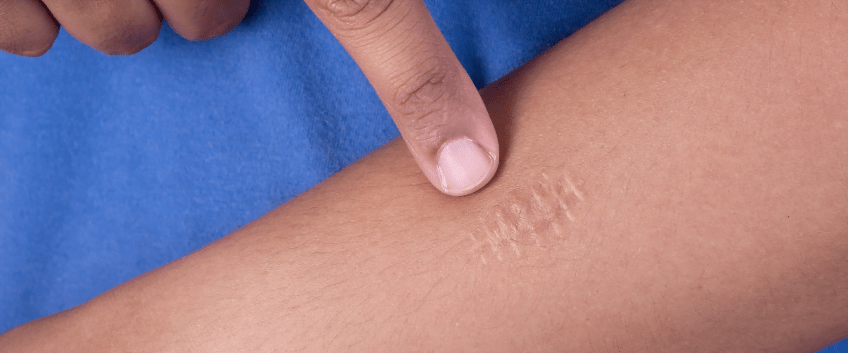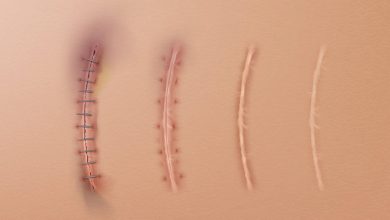Suture Marks (Suture Scars)
The edges of the incisions made on the skin for various reasons or the wounds formed as a result of skin injuries are sutured with suture materials and the wound edges are brought exactly together, in such a way as to ensure the integrity of the skin. However, surgical scars may occur as a result of this suturing procedure and may lead to serious aesthetic problems and related psychological problems.
The integrity of the skin is impaired when there is an incision or injury on the skin due to any cause. In the surgical treatment of such incisions and wounds, sutures are place to bring the wound edges together correctly and to keep them in that position. Suturing is still the most accurate and effective approach for healing a wound.
In my experience, bonding techniques involving the use of tissue adhesives or sterile tapes (wound closure tapes) are not as effective as suturing. Tissue adhesives infiltrate between the wound edges, preventing the wound edges from fully contacting each other. In addition, when tissue adhesive is used, it is not possible to fully stabilize the wounds, especially in cases where the wounds are in the moving parts of children.
Applying tapes to treat skin incisions does not always provide the desired results. Unfortunately, keeping the wound edges aligned and in full contact with each other is extremely difficult with wound closure tapes.
The suturing is ideal method for bringing wound edges together at the same level to close skin cuts or injuries. However, after suturing, scars caused by the sutures themselves may develop at right angles to the incision scar. These scars can cause serious aesthetic problems. However, it is possible to prevent the formation of these suture marks. I’d like to draw a distinction between suture marks and wound or surgical scars here.
Since a wound heals only with connective tissue instead of the original skin tissue, a mark remains to some extent, regardless of the method used to close an incision or wound on the skin. Such a mark is called a “scar”. For this scar, also known as wound scar or scar tissue, it takes about 2 years to take its final form. Suture marks, on the other hand, are scars left on the skin by the sutures placed at right angles to the incision line with intent to bring the wound edges closer together. The most significant difference of suture marks from incision scars is that they are avoidable.
The most important factor that determines whether the sutures placed on the skin will leave a permanent scar is the number of days the sutures are kept in place, rather than the thickness of the suture material. If the sutures are removed within 5-7 days, they will not leave a permanent scar. The longer this period, the higher the probability of suture marks.
Unfortunately, this detail is not known or neglected by many physicians who are not plastic surgery specialists but place sutures on the skin. In most cases, the sutures are only placed on the skin (without subcutaneous sutures) and the sutures are kept in place for at least 10 days due to fear of dehiscence, leading the formation of permanent suture marks.
What Do I Do?
In my practice, when closing skin incisions I first place self-dissolving suture materials to bring the subcutaneous tissues closer together. These sutures are invisible from the outside and are intended to keep the wound edges together for at least 3-6 months. After bringing the wound edges closer together by placing subcutaneous sutures, I place additional sutures to ensure that the top layer of the skin is aligned exactly against each other.
I remove these skin sutures within 5-7 days, that is, before they leave any permanent marks on the skin, and then I apply sterile tapes to provide mechanical support and keep them in place for at least five days. Thus, permanent suture marks do not occur, but as I mentioned earlier, a scar definitely develops on the incision line, and the treatment of this scar is another topic of discussion.
What is the Treatment Procedure for Suture Marks?
Unfortunately, there is not a good alternative to surgery for the treatment of permanent suture marks on the skin. The visibility of suture marks can be reduced with some non-surgical procedures such as fractional laser, but they cannot be completely removed. The most effective procedure for complete removal of suture marks is to surgically remove these marks and then suture that site again using the aesthetic surgical techniques I described above (scar revision).
In some cases where suture marks exist in addition to a large surgical scar, I use the “dermabrasion and thin skin patch” technique to make such marks and scars less visible. I particularly perform this procedure to treat surgical scars on the arms, and I don’t perform it to remove scars from the face.





